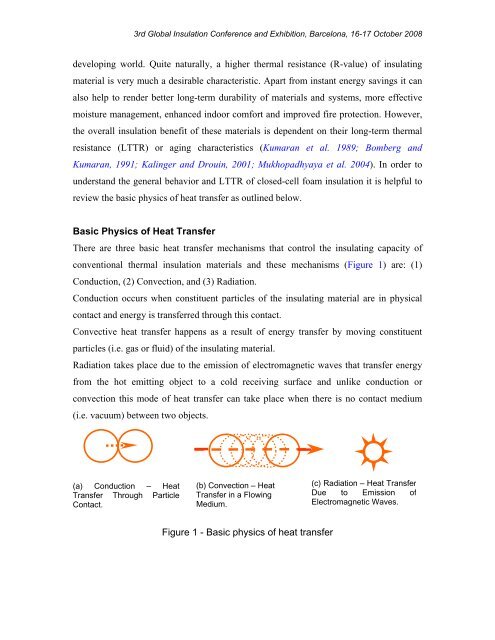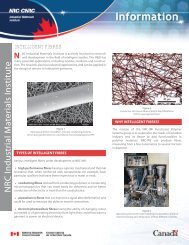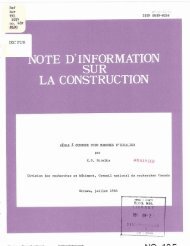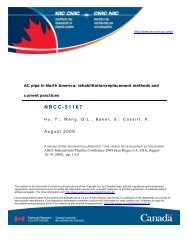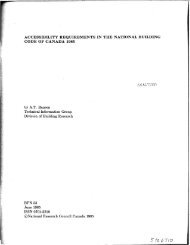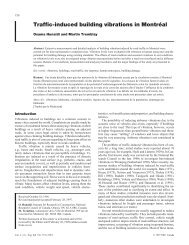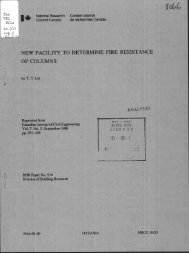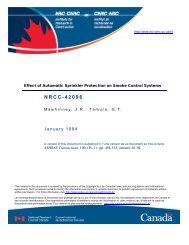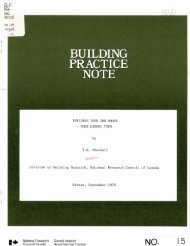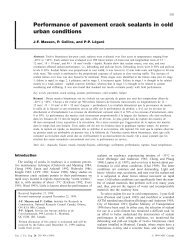Long-Term Thermal Resistance of Closed-Cell Foam Insulation ...
Long-Term Thermal Resistance of Closed-Cell Foam Insulation ...
Long-Term Thermal Resistance of Closed-Cell Foam Insulation ...
- No tags were found...
You also want an ePaper? Increase the reach of your titles
YUMPU automatically turns print PDFs into web optimized ePapers that Google loves.
3rd Global <strong>Insulation</strong> Conference and Exhibition, Barcelona, 16-17 October 2008developing world. Quite naturally, a higher thermal resistance (R-value) <strong>of</strong> insulatingmaterial is very much a desirable characteristic. Apart from instant energy savings it canalso help to render better long-term durability <strong>of</strong> materials and systems, more effectivemoisture management, enhanced indoor comfort and improved fire protection. However,the overall insulation benefit <strong>of</strong> these materials is dependent on their long-term thermalresistance (LTTR) or aging characteristics (Kumaran et al. 1989; Bomberg andKumaran, 1991; Kalinger and Drouin, 2001; Mukhopadhyaya et al. 2004). In order tounderstand the general behavior and LTTR <strong>of</strong> closed-cell foam insulation it is helpful toreview the basic physics <strong>of</strong> heat transfer as outlined below.Basic Physics <strong>of</strong> Heat TransferThere are three basic heat transfer mechanisms that control the insulating capacity <strong>of</strong>conventional thermal insulation materials and these mechanisms (Figure 1) are: (1)Conduction, (2) Convection, and (3) Radiation.Conduction occurs when constituent particles <strong>of</strong> the insulating material are in physicalcontact and energy is transferred through this contact.Convective heat transfer happens as a result <strong>of</strong> energy transfer by moving constituentparticles (i.e. gas or fluid) <strong>of</strong> the insulating material.Radiation takes place due to the emission <strong>of</strong> electromagnetic waves that transfer energyfrom the hot emitting object to a cold receiving surface and unlike conduction orconvection this mode <strong>of</strong> heat transfer can take place when there is no contact medium(i.e. vacuum) between two objects.(a) Conduction – HeatTransfer Through ParticleContact.(b) Convection – HeatTransfer in a FlowingMedium.(c) Radiation – Heat TransferDue to Emission <strong>of</strong>Electromagnetic Waves.Figure 1 - Basic physics <strong>of</strong> heat transfer


